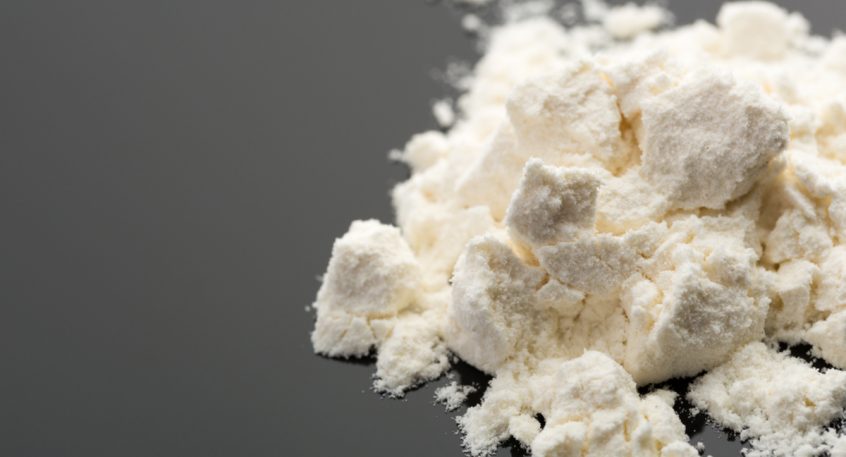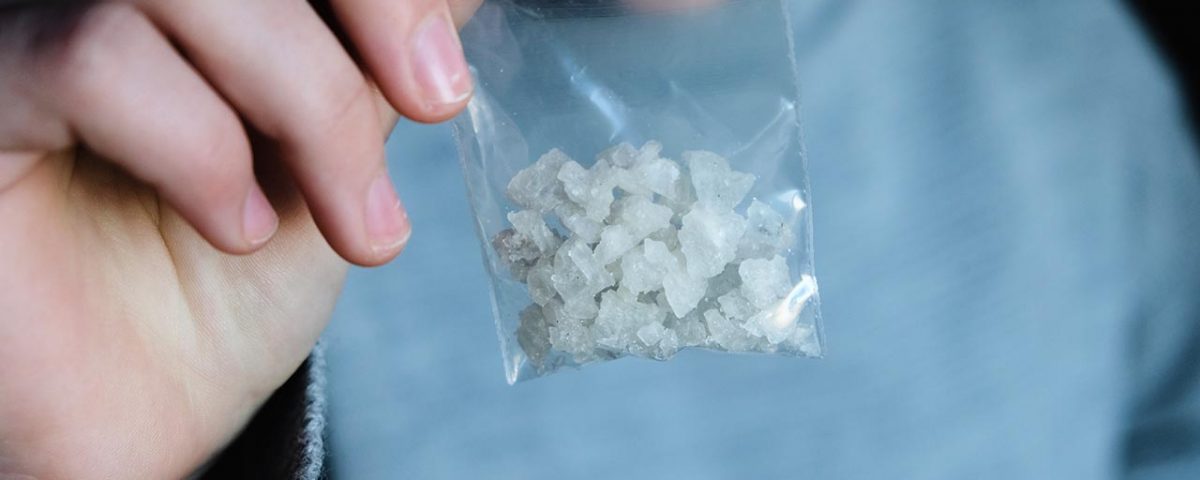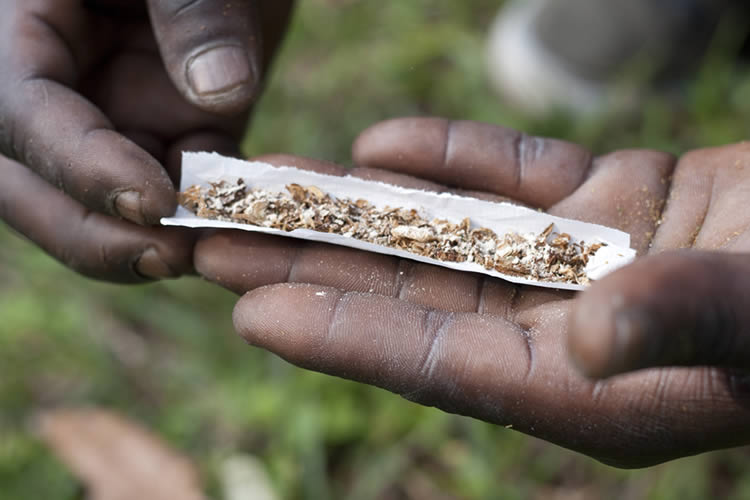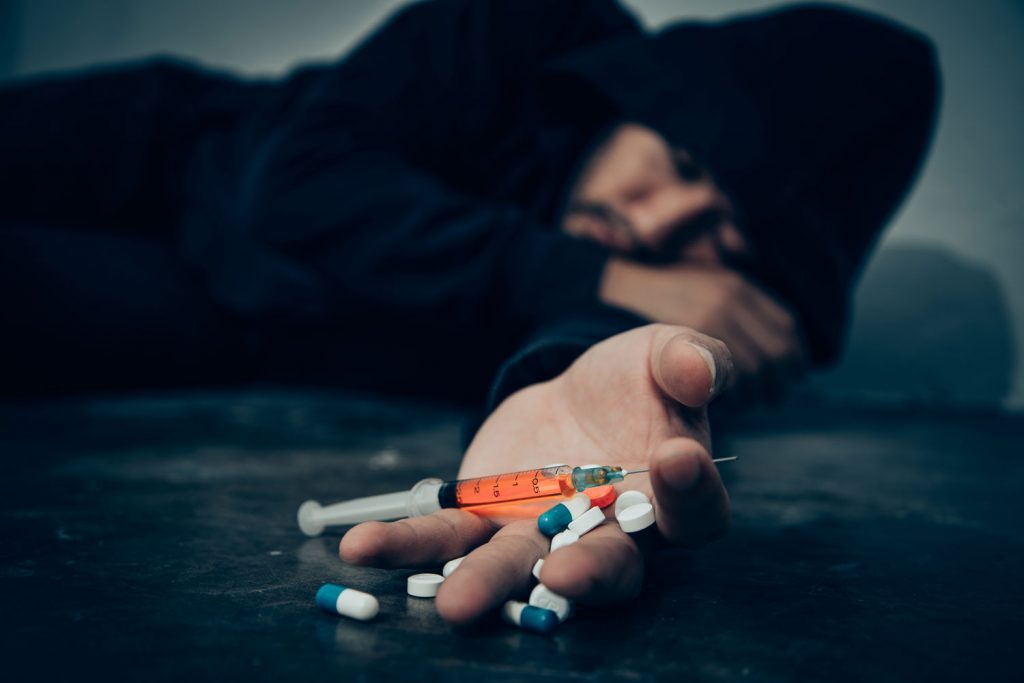Every year, drug abuse continues to steal thousands of lives in the United States, with overdose now being the number one cause of accidental death. Over 190 Americans lose their lives daily to an overdose, and disturbingly, more than two-thirds of these cases are linked to opioids. But what exactly is fueling this harrowing wave of fatalities? Which substances are the deadliest, and why?
Let’s uncover the most lethal street drugs on the planet—substances that corrode flesh, ravage organs, and reduce people to hollow shells of themselves. Here’s an in-depth look at ten of the most dangerous drugs ever to hit the streets, including their origins, effects, and the devastating toll they’ve taken.
10. Purple Drank — A Sweet Sip With a Dark Price
Purple Drank, also known as "lean," may sound like a sugary soda concoction, but this dangerous street drug is anything but harmless. Originating from the Southern hip-hop scene of the 1990s, it found notoriety thanks to mentions by artists like Big Moe, DJ Screw, and even Jay-Z. It’s typically made by mixing prescription-strength cough syrup—rich in codeine and promethazine—with soft drinks like Sprite and a handful of hard candies like Jolly Ranchers to enhance the flavor.
The resulting cocktail induces a slow, drowsy high, often described as a woozy or dreamlike state. Users may feel relaxed or euphoric at first—but the reality is far more sinister. Regular consumption can lead to serious health complications such as slowed breathing, seizures, and even heart failure. Because codeine is an opioid, Purple Drank is also highly addictive. When taken in high doses or over long periods, it suppresses the central nervous system, making overdose not just possible, but frighteningly likely.
While some have glamorized the drink through music and pop culture, the consequences of sipping lean are anything but glamorous.
9. Scopolamine — The ‘Zombie Drug’ of South America
Scopolamine, also nicknamed “Devil’s Breath,” is one of the most chilling drugs on this list—not just for its effects, but for how it’s used. Extracted from the nightshade family of plants, particularly Brugmansia trees native to parts of Colombia, Ecuador, and Venezuela, scopolamine is found as a fine white powder or sometimes brewed as a tea.
While it has legitimate medical uses in very controlled doses (e.g., treating motion sickness), the street form of scopolamine has become infamous for its role in crime. Reports from South America suggest that criminals blow the powder into unsuspecting victims' faces, rendering them mentally compliant—essentially robbing them of free will. Victims under its influence may hand over valuables, empty their bank accounts, or even assist in crimes against themselves, with no memory afterward.
It’s no exaggeration to say this drug turns people into zombies. A mere gram of scopolamine is said to have the potential to kill up to 20 people, making it extraordinarily toxic. Beyond its terrifying psychological effects, it can cause hallucinations, delirium, respiratory failure, and death. Even the CIA reportedly experimented with scopolamine as a truth serum during the Cold War—but abandoned it due to its unpredictable and hallucinogenic effects.
8. Heroin — A Legacy of Addiction and Destruction
Heroin is one of the most iconic and destructive drugs ever known, with a grim legacy that stretches back to its creation in 1874 by chemist C.R. Alder Wright. Initially developed for medical use, heroin was once prescribed for severe pain and trauma. However, by 1971 it was outlawed in many countries due to its highly addictive nature and devastating impact on users.
Since then, heroin has left a trail of destruction across continents. It infiltrates communities, shatters families, and draws users into a life ruled by dependency and despair. Heroin is an opioid made from morphine, and once injected, snorted, or smoked, it produces an intense rush of euphoria. But that high comes with a cost—one that includes collapsed veins, liver disease, brain damage, and a staggering risk of overdose.
Addiction to heroin often leads users into cycles of crime, poverty, and homelessness. Withdrawal from the drug is notoriously severe, with symptoms such as intense pain, insomnia, vomiting, and cold flashes. Despite its known dangers, heroin remains one of the most abused and deadly drugs in the world.

7. Crack Cocaine — Cheap, Addictive, and Catastrophic
Crack cocaine exploded onto the drug scene in the 1980s, creating one of the most devastating drug epidemics in modern history. As cocaine became more widely available, dealers began converting the powdered drug into a smokable form using baking soda and heat. This process produced solid "rocks" of crack cocaine, which could be sold in smaller, cheaper quantities—making the drug accessible to a much broader audience.
The result? A rapid spread of addiction across urban America and beyond. Crack delivers a short, powerful high, followed by an equally intense crash. Its effects on the body and brain are alarming: it damages the lungs, kidneys, and liver, while also constricting blood vessels, raising the risk of heart attack and stroke.
At the height of its popularity, crack cocaine use in the U.S. alone was estimated to exceed 10 million people. Its addictive nature is brutal—users often become hooked after the first use. Over time, addiction leads to severe psychological changes, including paranoia, aggression, and hallucinations. Entire neighborhoods were decimated by crack’s influence, leading to lasting social and economic scars.

6. Crystal Meth — The Drug That Destroys From Within
Known on the street as “ice,” “glass,” or just “meth,” crystal meth is a synthetic stimulant that devastates both body and mind. It first emerged in 1887 but gained widespread use during World War II when German, American, and Japanese troops were given methamphetamine to enhance alertness and suppress fatigue. Japan’s kamikaze pilots were even dosed before their final flights.
In the post-war years, methamphetamine was briefly prescribed for weight loss and depression before being banned due to its addictive potential. Modern-day meth is often produced in makeshift labs or smuggled in bulk by organized crime syndicates, particularly from Mexico.
Crystal meth delivers a powerful euphoric high, but it comes at a monstrous cost. Short-term use leads to hyperactivity, paranoia, and extreme anxiety. Long-term use is even more horrifying: severe tooth decay ("meth mouth"), skin sores, muscle wasting, hallucinations, and irreversible brain damage. It ravages facial features and internal organs, leaving users looking decades older and physically hollowed out. The drug also alters dopamine production in the brain, making pleasure without meth nearly impossible—a key reason addiction is so hard to break.
5. AH-7921 — The ‘Legal Heroin’ That Turned Lethal
AH-7921 may sound like a secret military project, but it’s actually a synthetic opioid that once flew under the legal radar. Created in the 1970s by a pharmaceutical company researching alternatives to morphine, it reemerged decades later as a so-called "legal high" sold openly online until 2015.
Its appeal was straightforward: it mimicked the effects of heroin—euphoria, pain relief, sedation—without the immediate legal consequences. But beneath its deceptive branding, AH-7921 held terrifying risks. It was estimated to be about 80% as powerful as morphine, yet poorly understood and dangerously unpredictable in unregulated doses.
Users reported side effects such as numbness, respiratory depression, and in severe cases, total breathing cessation. There was even one documented death in the UK linked to the drug, prompting its swift reclassification as a Class A substance. Toxicology experts have also warned about the drug’s link to gangrene and other severe complications, likely due to contamination or improper administration.
Despite being relatively obscure, AH-7921 serves as a grim reminder of how quickly synthetic opioids can infiltrate the streets—and how devastating their effects can be.
4. Flakka — A Frenzied High With Permanent Consequences
Flakka, often referred to as the “zombie drug,” is a synthetic stimulant chemically similar to the substances found in bath salts. Its scientific name is alpha-PVP, and while it was originally promoted as a legal alternative to ecstasy, Flakka is far more unpredictable—and far more dangerous.
Sold in crystal form, often resembling shards of white gravel, Flakka can be smoked, injected, snorted, or swallowed. The effects hit fast and hard: rapid heartbeat, intense euphoria, and a heightened sense of energy and confidence. But the highs can quickly spiral into terrifying territory. Users frequently experience severe paranoia, aggressive behavior, hallucinations, and delusions of superhuman strength. These episodes have led to public incidents of people running naked through the streets, smashing through glass, or attacking others while under the influence.
What makes Flakka particularly menacing is its potential for long-term psychological damage. It disrupts the brain’s regulation of serotonin and dopamine, two neurotransmitters essential to emotional stability. As a result, some users experience psychosis that lingers long after the drug has left their system. There’s also the very real risk of heart failure, especially when used in large doses or mixed with other substances. In short, Flakka can transform even a single experience into a life-altering—or life-ending—event.
3. Bath Salts — Harmless Name, Horrific Impact
Don’t be fooled by the name—bath salts are not for soaking in a warm tub. These synthetic cathinones are chemically similar to substances found in the khat plant and are notorious for their intense stimulant effects. The name "bath salts" originated from a marketing tactic to bypass legal restrictions, with the product disguised as harmless household items and labeled "not for human consumption."
Most commonly encountered in the U.S., bath salts rose to infamy in the early 2010s after a wave of disturbing public incidents. Users were reported to exhibit violent, erratic behavior, extreme paranoia, and even cannibalistic tendencies—earning the drug a reputation for inducing "zombie-like" episodes.
Bath salts are typically snorted, smoked, or injected, and the results can be catastrophic. Short-term effects include chest pain, increased heart rate, elevated blood pressure, and agitation. But the real horror lies in the psychiatric symptoms: vivid hallucinations, suicidal thoughts, and extreme panic. The drug overstimulates the central nervous system, and in many cases, users are left permanently altered mentally.
Because it was often sold legally at first, many users mistakenly assumed bath salts were safe. But behind the clever marketing lies a dangerous and unpredictable drug that can permanently alter the mind and, in many cases, end lives.

2. Whoonga — South Africa’s Deadly Homemade Killer
Whoonga is a grim testament to desperation, poverty, and the dark ingenuity of street drug chemistry. Originating in South Africa, it’s a deadly cocktail composed of HIV antiretroviral medication, household chemicals, and a mixture of fillers that can include rat poison, ammonia, and crushed detergent. The result is a highly toxic and addictive powder, typically smoked with cannabis in rolled cigarettes.
This Frankenstein-like blend is disturbingly easy to find in some urban areas of South Africa, largely due to the country's high rate of HIV and the widespread availability of antiretroviral medications. In some tragic cases, patients sell their own medication—or are robbed of it—to feed the black-market demand for Whoonga.
Users report a short-lived high, described as euphoric or dreamlike, but it comes at an incredible price. Whoonga wreaks havoc on the internal organs, causing bleeding, stomach ulcers, and liver failure. Its toxicity is such that long-term use is almost certainly fatal. And like many substances on this list, it hooks its users fast—creating dependency, withdrawal, and social collapse.
The cultural impact of Whoonga has also been devastating. It exacerbates the HIV crisis, both by diverting medications and contributing to high-risk behaviors among users. For many who start, escape is nearly impossible.
1. Krokodil — The Flesh-Eating Nightmare
Krokodil is perhaps the most gruesome drug on this list—and that’s saying a lot. Nicknamed after the crocodile due to the scaly, greenish skin it leaves behind, Krokodil (desomorphine) is a homemade opioid concocted using codeine and a toxic stew of chemicals like iodine, gasoline, hydrochloric acid, and red phosphorus—many of which are scraped from matchsticks or cleaning products.
First surfacing in Russia in the early 2000s, Krokodil became popular due to its affordability. A gram costs a third of the price of heroin and delivers a similarly intense but far shorter high. The trade-off? An excruciating physical toll. The impure ingredients used in its makeshift production destroy tissue at the injection site, causing severe infections, rotting flesh, and in many cases, amputation. It often leads to gangrene, and if the user survives that, sepsis or organ failure usually follows.
What makes Krokodil truly horrifying is how quickly it ravages the body. In some cases, users are visibly disfigured within weeks of first injecting the drug. Many don’t survive a year of consistent use. Despite this, the drug has spread beyond Russia, with reported cases in Europe and North America.
It’s the ultimate symbol of desperation—a drug taken not for its pleasure, but because it’s the only option left for some addicts. And it may well be the closest thing to chemical self-destruction ever produced.









